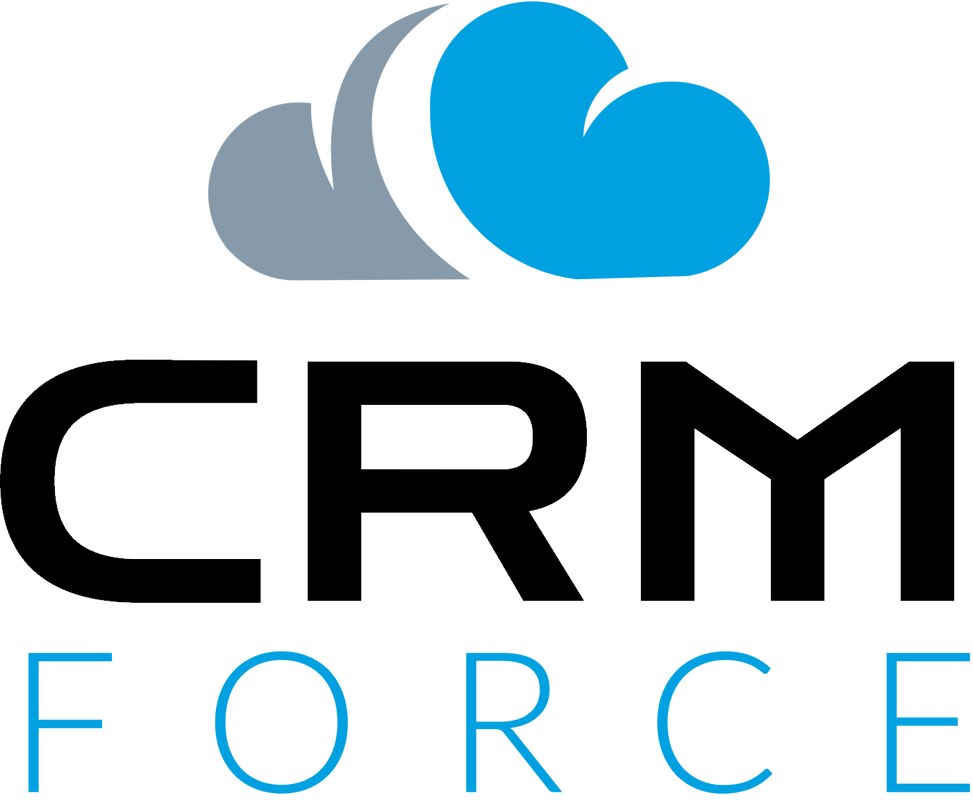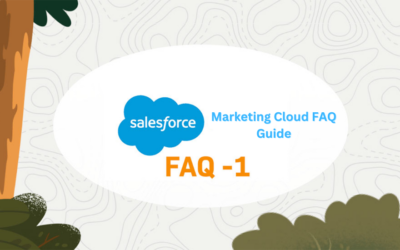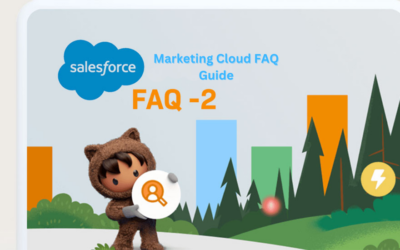Recruitment, the art and science of finding the perfect fit for your organization, has undergone a profound transformation in the digital age. The days of posting job ads in newspapers and relying solely on personal networks are distant memories, replaced by the dynamic and data-rich realm of modern recruitment. In this comprehensive guide, we embark on a deep dive into the ever-evolving landscape of recruitment, dissecting the latest trends and techniques that have reshaped the industry. From the transition from print to online job boards to the rise of social media and data-driven decision-making, this exploration will shed light on the strategies and tools that have become the cornerstones of the modern recruitment playbook.
As we navigate through this landscape, we will not only uncover the critical milestones that have reshaped recruitment but also delve into the very heart of the modern candidate’s expectations. In a world where work-life balance, career development opportunities, and company culture have taken center stage, understanding what drives the modern candidate has never been more vital. We will explore how these changing dynamics are impacting the strategies organizations employ in their quest to attract, engage, and retain top talent. From remote work options to diversity and inclusion initiatives, this guide will equip you with the knowledge and insights needed to navigate the intricacies of modern recruitment with confidence and precision. If you need assistance with Salesforce CRM setup and optimization, companies like CRM Force can provide valuable expertise and support.
1- The Evolution of Recruitment
Recruitment, as a practice, has come a long way over the years. The traditional methods of placing job ads in newspapers or relying solely on personal networks have given way to more sophisticated approaches. In this section, we’ll delve into the evolution of recruitment, highlighting key milestones that have shaped the field.
The Transition from Print to Online
The advent of the internet brought about a dramatic shift in recruitment. Job postings moved from print media to online job boards, making it easier for both employers and job seekers to connect. This transition not only expanded the reach of job listings but also enabled more efficient screening of candidates.
Online Job Boards: The emergence of online job boards, such as LinkedIn, Indeed, and Glassdoor, revolutionized the way employers and job seekers interact. These platforms allowed job postings to reach a global audience, facilitating the search for candidates with diverse backgrounds and skills. They also offered advanced filtering and search options, making it easier for recruiters to identify candidates with the specific qualifications they require.
LinkedIn’s Impact: LinkedIn, in particular, has transformed the professional networking landscape. It serves as a hub for job seekers, employers, and professionals seeking to connect. Employers use LinkedIn not only to post job openings but also to showcase their company culture, values, and achievements. It has become a place to build and promote an employer brand.
2- The Rise of Social Media
Social media platforms, such as LinkedIn, have emerged as powerful tools in the modern recruitment toolkit. Companies now use social networks to build their employer brand, engage with potential candidates, and even source talent directly.
LinkedIn’s Dominance: LinkedIn is especially influential in the realm of modern recruitment. It provides a platform for professionals to create detailed profiles, highlighting their skills, experiences, and endorsements. For recruiters, it offers a treasure trove of data for sourcing, screening, and connecting with candidates.
Social Media Sourcing: In addition to LinkedIn, other social platforms like Twitter and Facebook are also being leveraged for sourcing talent. Employers use hashtags and keywords to identify potential candidates who are active on these platforms.
Employer Branding on Social Media: Companies have realized the importance of maintaining an active presence on social media to attract candidates. Posting content about company culture, employee success stories, and industry insights not only engages candidates but also showcases the organization as a desirable place to work.
3- Data-Driven Decision-Making
Recruitment has become increasingly data-driven. The use of analytics and data science allows organizations to assess the effectiveness of their recruitment efforts, optimize their processes, and make more informed hiring decisions.
Sourcing Analytics: Organizations are utilizing data analytics to identify which sourcing channels are most effective in bringing in quality candidates. This means understanding which job boards, social networks, or referral programs yield the highest-quality applicants.
Resume Screening Algorithms: Data-driven screening involves using algorithms to assess resumes and applications for keywords, skills, and qualifications. This helps prioritize candidates for further review. Resume parsing technology extracts relevant information from resumes and automatically populates applicant tracking systems, saving recruiters valuable time.
Predictive Analytics: Predictive analytics leverages historical data to forecast future hiring needs. This allows companies to be proactive in their recruitment efforts rather than reactive. By analyzing past hiring patterns and outcomes, organizations can better prepare for future talent demands.
Performance Analysis: Data can be used to evaluate the success of recruitment efforts. This includes assessing the performance of different sourcing channels and the quality of hires. Metrics such as time-to-fill, cost-per-hire, and quality-of-hire are now standard in recruitment analytics.
4- The Modern Candidate: What Are They Looking For?
In the era of modern recruitment, job seekers have different expectations and demands compared to the past. To attract and retain top talent, it’s crucial for employers to understand what modern candidates are seeking in a job. Here are some key factors:
Work-Life Balance
Modern candidates often prioritize work-life balance. They seek employers who offer flexible work arrangements and understand the importance of maintaining a healthy equilibrium between work and personal life.
Work-Life Balance Expectations: The concept of work-life balance has evolved to include expectations such as:
Remote Work Options: The ability to work remotely, even if only part of the time, is highly attractive to many candidates. It allows for flexibility in managing personal and professional commitments.
Flexible Schedules: Employers offering flexible work hours or compressed workweeks are seen as more accommodating to employees’ personal lives.
Wellness Programs: Companies that offer wellness programs and resources for managing stress and maintaining physical and mental health are appealing to modern candidates.
Paid Time Off: Generous vacation and leave policies, including parental leave, are seen as a commitment to work-life balance.
Career Development Opportunities
Professional growth is a top priority for many candidates. They look for employers who invest in their development through training, mentorship, and opportunities for advancement.
Career Development Initiatives: Meeting the expectations of modern candidates for career development involves implementing the following initiatives:
Training and Development Programs: Companies are offering continuous learning opportunities, workshops, and courses to help employees enhance their skills and advance their careers. This includes technical training, leadership development, and soft skills enhancement.
Clear Paths for Advancement: Employers are creating transparent career paths and providing guidance on how employees can progress within the organization. This may include defined job levels and criteria for promotion.
Mentorship Programs: Mentorship opportunities allow employees to learn from experienced professionals and gain insights into their career trajectories. Mentorship can occur both within the organization and through external networks.
Internal Mobility: Organizations are encouraging internal mobility, enabling employees to explore different roles within the company to develop new skills and experiences. This not only supports career development but also helps retain top talent.
5- Company Culture
Company culture has a significant impact on a candidate’s decision to join an organization. Modern job seekers want to work in environments that align with their values and provide a sense of belonging.
Cultural Fit: In-depth considerations of company culture in modern recruitment involve:
Cultural Fit Assessment: Employers are placing a stronger emphasis on cultural fit during the hiring process to ensure that candidates align with the organization’s values and mission. This includes assessing a candidate’s values, behaviors, and work style to ensure alignment with the company culture.
Diversity and Inclusion: Candidates seek inclusive workplaces that value diversity. Organizations are actively promoting diversity and inclusion initiatives to create more welcoming environments. This includes diverse hiring panels, employee resource groups, and inclusive policies.
Transparency: Transparent communication about company values, expectations, and goals is critical in establishing a positive culture. Employees want to understand the direction the company is heading and how they can contribute to its success.
Employee Feedback: Soliciting and acting upon employee feedback is a crucial aspect of maintaining a healthy company culture. Regular surveys and open channels for communication enable companies to continuously improve their culture.
6- Remote Work Options
The COVID-19 pandemic accelerated the adoption of remote work. Many candidates now expect the option to work remotely, at least part of the time.
Accommodating Remote Work Expectations: To accommodate candidates’ desire for remote work, organizations are:
Investing in Technology: Employers are providing the necessary tools and technology for effective remote work, including secure virtual private networks (VPNs), collaboration software, and video conferencing tools. These tools support communication, collaboration, and project management for remote teams.
Flexible Work Policies: Companies are creating policies that outline expectations for remote work, including hours of availability and communication protocols. They are also setting guidelines for the use of company equipment and data security.
Performance Metrics: Employers are implementing performance metrics that focus on output and results rather than physical presence in the office. This shift from time-based performance to results-based performance ensures that remote workers are evaluated fairly.
Remote Onboarding: Remote onboarding processes have been developed to integrate new employees into the organization effectively, even if they never set foot in the physical office. This includes digital orientations, virtual meet-and-greets, and e-learning modules.
7- Modern Recruitment Strategies
With an understanding of how recruitment has evolved and what modern candidates are seeking, it’s time to explore the strategies that have emerged in response to these changes.
Employer Branding
Building a strong employer brand is essential in the modern recruitment landscape. Companies need to showcase their culture, values, and unique selling points to attract the right candidates. This involves creating compelling content, including videos and social media posts, to give candidates an authentic look at what it’s like to work for the organization.
Authentic Storytelling: Sharing real employee stories and experiences is at the heart of effective employer branding. This type of storytelling provides candidates with a genuine perspective on the company and its culture. Employees can share their journeys, challenges they’ve overcome, and their achievements within the organization.
Highlighting Company Culture: Employer branding involves showcasing the company’s culture through various media. This includes images and videos of the workplace, employee testimonials, and behind-the-scenes looks at day-to-day operations. This content can be shared on the company’s website, social media, and job postings.
Leveraging Employee Advocacy: Encouraging employees to become brand ambassadors is a powerful strategy. When employees share their positive experiences at the company on their personal social media profiles, it amplifies the message and reaches a wider audience.
Creating an Engaging Careers Page: The company’s careers page on its website should be user-friendly, informative, and engaging. It should include information about the organization’s mission, values, benefits, and available positions. Interactive elements, such as employee testimonials and videos, can make the page more appealing.
8- AI and Automation
Artificial intelligence and automation are revolutionizing recruitment. These technologies can streamline the hiring process by screening resumes, scheduling interviews, and even conducting initial interviews through chatbots. By automating routine tasks, recruiters can focus on the human aspects of the job, such as building relationships with candidates.
Resume Screening: AI-powered resume screening software can quickly analyze and rank resumes based on predefined criteria. This reduces the time recruiters spend on initial resume reviews and ensures that no qualified candidate is overlooked.
Chatbots for Initial Screening: Chatbots are being used to conduct initial screenings of candidates. They can ask predefined questions and evaluate responses based on set criteria. This helps identify the most promising candidates for further consideration.
Automated Interview Scheduling: Tools for automated interview scheduling can save significant time for recruiters. They integrate with calendars and email systems, allowing candidates to select interview slots that match their availability.
Candidate Relationship Management (CRM): CRM systems, traditionally used in sales and marketing, are now being adapted for recruitment purposes. They allow recruiters to maintain relationships with potential candidates over time, ensuring a pipeline of talent for future positions. These systems track interactions, automate follow-up communications, and provide a centralized database for candidate information.
9- Diversity and Inclusion
Modern recruitment prioritizes diversity and inclusion. Companies are recognizing the value of diverse perspectives and backgrounds and actively working to create more inclusive hiring processes.
Diversity Initiatives: Organizations are taking proactive steps to increase diversity in their workforce. This includes setting diversity hiring goals, creating diversity and inclusion teams, and partnering with organizations that promote diversity.
Bias Training: Recruiters and hiring managers are often provided with bias training to ensure that hiring decisions are based on skills and qualifications rather than biases related to race, gender, age, or other factors.
Inclusive Job Descriptions: Inclusive language in job descriptions and advertisements is being used to attract a wider range of candidates. Organizations are also emphasizing their commitment to diversity in job postings.
Diverse Interview Panels: Some organizations are ensuring that interview panels are diverse, with members from various backgrounds. This helps candidates see that the company values diversity and inclusion.
10- Candidate Relationship Management (CRM)
A CRM system, traditionally used in sales and marketing, is now being adapted for recruitment purposes. It allows recruiters to maintain relationships with potential candidates over time, ensuring a pipeline of talent for future positions.
Building Candidate Pipelines: By nurturing relationships with candidates who were not selected for previous positions, organizations can build a pipeline of talent for future roles. This proactive approach reduces the time and cost of future hires.
Personalized Communication: CRM systems enable personalized communication with candidates. Recruiters can send tailored messages and content to candidates based on their interests and qualifications.
Automated Follow-Ups: CRM systems can automate follow-up emails and reminders, ensuring that candidates receive updates on their application status and upcoming opportunities.
Analytics and Reporting: CRM systems provide valuable analytics and reporting capabilities, allowing organizations to track the effectiveness of their candidate relationship efforts and make data-driven improvements.
11- The Importance of Data in Recruitment
One of the most significant shifts in modern recruitment is the use of data and analytics to inform decision-making. Here’s how data is transforming the hiring process:
Predictive Analytics
Predictive analytics uses historical data to forecast future hiring needs, allowing companies to be proactive rather than reactive in their recruitment efforts.
Talent Demand Forecasting: Predictive analytics can estimate future talent demand based on historical hiring patterns, business growth projections, and seasonal fluctuations.
Success Prediction: By analyzing data from previous hires, predictive analytics can identify the characteristics, experiences, and skills that correlate with successful employees. This information can inform candidate selection and development strategies.
Attrition Prediction: Predictive models can also forecast which employees are most likely to leave the organization. This allows for proactive retention efforts, such as targeted training or compensation adjustments.
Resource Allocation: Predictive analytics can guide resource allocation for recruitment, helping organizations focus their efforts on the most effective strategies and channels.
12- Talent Mapping
Data can help identify talent pools and gaps in the market, enabling organizations to target their recruitment strategies more effectively.
Market Analysis: Data can be used to analyze the talent market in specific locations, industries, or job roles. This information helps organizations understand the competitive landscape and the availability of specific skills.
Competitor Analysis: Organizations can use data to gain insights into the talent acquisition strategies of competitors, helping them identify opportunities to attract top talent.
Skill Gap Identification: By analyzing current employees’ skills and comparing them to future needs, organizations can identify skill gaps and plan for training and development.
13- Performance Analysis
Data can be used to evaluate the success of recruitment efforts and identify areas for improvement. This includes assessing the performance of different sourcing channels and the quality of hires.
Channel Performance: Data can reveal which sourcing channels yield the highest-quality candidates, the fastest time-to-fill, and the lowest cost-per-hire. This allows organizations to allocate resources effectively.
Quality-of-Hire Metrics: Performance analysis can assess the quality of hires by tracking their performance and retention over time. High-quality hires positively impact an organization’s bottom line.
Conversion Rates: Data can track conversion rates at various stages of the recruitment process, helping organizations identify bottlenecks and areas for improvement.
Time-to-Fill: Analyzing time-to-fill data can identify inefficiencies in the hiring process, enabling organizations to streamline their processes.
14- The Role of Technology in Modern Recruitment
Technology is at the forefront of modern recruitment. It’s not just about using software for tracking applicants; it’s about harnessing the power of technology to make the entire process more efficient and effective.
Applicant Tracking Systems (ATS)
ATS software streamlines the application process, helps with resume parsing, and ensures candidates are tracked efficiently through the hiring pipeline.
Resume Parsing: ATS systems use algorithms to extract relevant information from resumes and populate candidate profiles, making it easier for recruiters to review and compare applicants.
Workflow Automation: ATS platforms often include workflow automation features, allowing organizations to set up custom recruitment processes, automate communication, and ensure that candidates move through the pipeline seamlessly.
Candidate Database: ATS systems maintain a comprehensive database of candidates, enabling recruiters to search and source candidates for future positions.
Compliance Management: ATS platforms help organizations manage compliance with labor laws and regulations by maintaining accurate records and documentation.
15- Video Interviews
Video interviews have become the norm, especially in remote recruitment. They allow employers to assess a candidate’s soft skills, communication, and cultural fit early in the process.
Scheduling Flexibility: Video interviews offer scheduling flexibility for both candidates and interviewers. They eliminate the need for travel, reducing the time and costs associated with in-person interviews.
Reduced Bias: Video interviews can help reduce bias in the hiring process, as candidates are evaluated based on their responses and qualifications rather than their appearance.
Global Reach: Video interviews facilitate interviews with candidates from around the world, expanding the talent pool for organizations.
Interview Recording: Some video interview platforms allow interviews to be recorded and reviewed, providing valuable insights for hiring decisions.
16- Virtual Reality (VR) and Augmented Reality (AR)
VR and AR are being used to create immersive job previews and training simulations, providing candidates with a realistic preview of the job and work environment.
Virtual Job Previews: VR and AR can create virtual job previews, allowing candidates to “walk through” the workplace, meet potential colleagues, and experience a day in the life of the job.
Skills Assessment: VR and AR can be used for skills assessment. For example, they can simulate tasks that candidates would perform on the job to assess their competencies.
Onboarding and Training: VR and AR can support onboarding and training efforts by providing immersive experiences that help employees familiarize themselves with their roles and the organization.
Cost Reduction: While the initial investment in VR and AR technology can be substantial, it can lead to long-term cost savings by reducing the need for in-person training and travel.
18- Challenges in Modern Recruitment
Despite the many advantages of modern recruitment, it comes with its own set of challenges. Organizations need to be aware of these obstacles and adapt their strategies accordingly.
Information Overload
With the vast amount of data available, recruiters may suffer from information overload. It’s crucial to use data efficiently and not get bogged down in irrelevant details.
Data Prioritization: Organizations must prioritize the most relevant data for their specific recruitment needs and focus on key metrics that align with their goals.
Data Analysis Skills: Recruiters and HR professionals need to develop data analysis skills to extract actionable insights from the data they collect.
Tools and Platforms: Choosing the right data analytics tools and platforms that align with organizational goals is essential to managing information effectively.
19- Privacy and Security
Recruitment processes involve handling sensitive candidate data. Ensuring data privacy and security is a top priority, especially with the implementation of automation and AI.
Data Encryption: Organizations need to ensure that all candidate data is encrypted and stored securely to protect against data breaches.
Compliance with Data Regulations: Employers must stay up-to-date with data privacy regulations, such as GDPR and CCPA, and ensure compliance in their recruitment processes.
Candidate Consent: Obtaining clear and informed consent from candidates to collect and process their data is crucial. This transparency builds trust and helps maintain data privacy.
Third-Party Vendors: When working with third-party recruitment tools and platforms, organizations should assess the vendors’ data security practices and ensure they align with their own standards.
20- Competition for Talent
The best candidates are in high demand. Competition among organizations for top talent is fierce, making it essential to stand out as an employer of choice.
Employer Branding: Building a strong employer brand helps organizations attract top talent. It differentiates them from competitors and highlights what makes them a desirable place to work.
Candidate Experience: Creating a positive candidate experience, from application to onboarding, sets organizations apart and leaves a lasting impression on candidates.
Salary and Benefits: Competitive compensation packages and benefits can be a deciding factor for candidates when choosing between offers.
Continuous Improvement: Organizations must continuously assess and improve their recruitment processes to stay competitive in attracting the best talent.
Conclusion
Modern recruitment is a dynamic field that continues to evolve as technology, candidate expectations, and business needs change. The key to success lies in understanding the shifting landscape, adopting innovative strategies, and leveraging data to make informed decisions. In today’s competitive job market, finding the perfect fit for your organization requires a combination of art and science. With the right approach and a commitment to staying on the cutting edge of recruitment trends, businesses can build teams that drive growth, innovation, and success in the modern world of work.
Modern Recruitment is no longer just about posting job listings and waiting for the right candidate to apply; it’s a multifaceted process that leverages technology, data, and a deep understanding of candidate expectations to attract and retain top talent. By embracing the principles of modern recruitment and continually adapting to changing trends, organizations can position themselves as industry leaders in the search for the perfect fit. To learn more about how CRM Force can assist you in recruiting top CRM talent and optimizing your CRM strategies for successful drip campaigns, contact us today. Together, let’s maximize your customer engagement Contact Us today.





